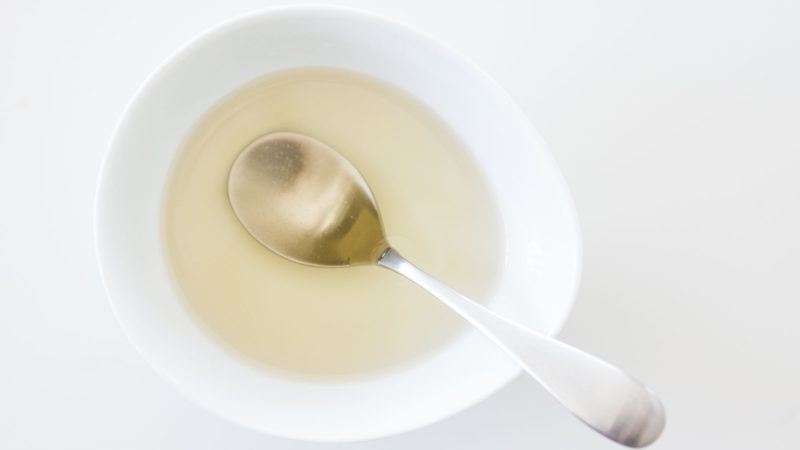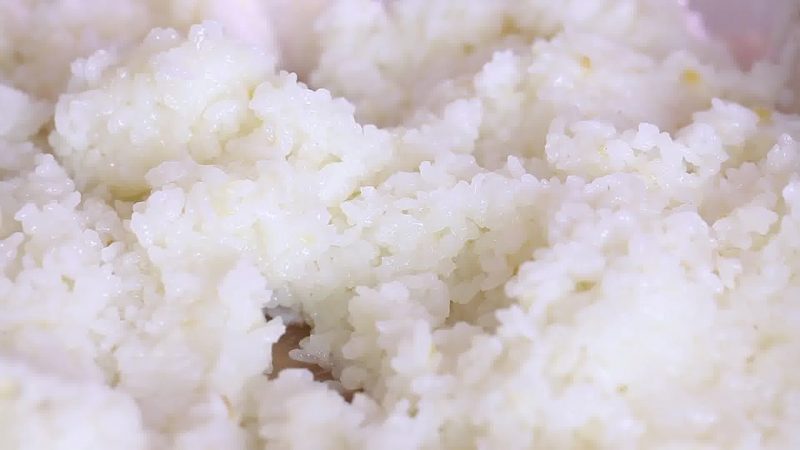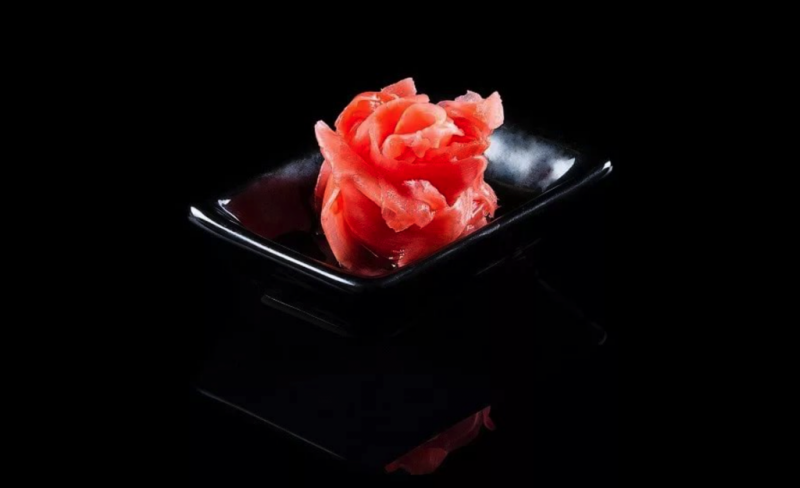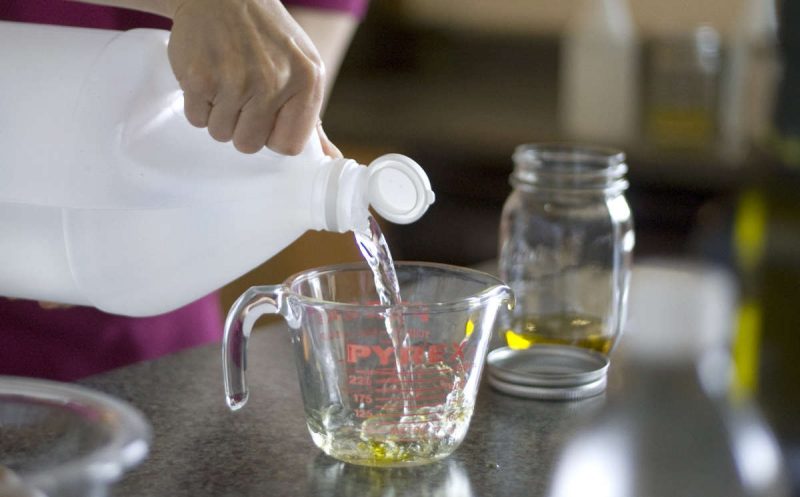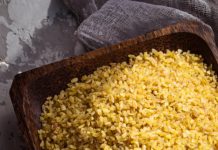Vinegar is known to people from ancient times, it is even mentioned in the Bible and the Sunnah. There are more than 4 thousand types of its preparation, and the recipes of many Asian dishes include expensive vinegar, the basis of which is rice. The question of how to replace rice vinegar is of interest to many housewives, but is it worth it? Let's try to understand this article.
Material Content:
What dishes is rice vinegar used for?
Sushizu - that's what they call a mixture of rice vinegar with granulated sugar and simple salt. In 1 liter of ready-made dressing used in the preparation of classic sushi, contains 600 g of ordinary white sugar and 200 g of salt.
Rice vinegar is traditionally used to prepare many dishes:
- salads;
- drinks;
- fish and meat dishes;
- various sauces.
The use of the product corresponds to its variety, there are three of them - white, black and red vinegar.
For the preparation of sushi and rolls, white rice vinegar is suitable. Other types are used for dressing soups, creating sauces and drinks.
How can I replace the product for sushi and rolls
Buy rice vinegar for sushi and rolls is easy. Although its price is several times higher than other types of natural vinegar, experienced cooks do not recommend replacing it with something else.
There is ordinary rice vinegar on sale, and there is already ready-made seasoning for sushi based on it - Sushizu. It is necessary to carefully read the composition on the label, if sugar and salt are indicated among the components, then this is a ready-made dressing. Add it to sushi in the amount of 150 g per 1 kg of cooked boiled rice.
If you bought regular rice vinegar, you can make the dressing yourself.For 1 kg of finished rice you will need 100 g of vinegar, 50 g of granulated sugar and a small spoon of fine salt. In order for the granules to dissolve completely, the vinegar will need to be slightly warmed up, not allowing boiling.
For pickling meat, fish and ginger
By marinating various products, you can use sauces with traditional table vinegar or made from grapes, apples, rice.
The subtleties of pickling meat:
- Marinate meat before frying. Only pork or beef is suitable for this; chicken does not like such an additive in marinade.
- If it is pork, take the neck, the inside of the ham or tenderloin, for beef - a thick and thin edge, tenderloin.
- For marinade mix: chopped onions (2 tbsp.), Table vinegar 9% (2 tbsp.), Olive oil (2 tbsp.), Mustard (1 tsp.), Seasoning for kebabs, black ground pepper.
- They put marinated meat for at least 4 hours, and preferably until morning.
The subtleties of pickling fish (mackerel) for sushi.
To make the marinade, take:
- soy sauce;
- Mitsukan (the same rice vinegar);
- sake;
- ginger shavings;
- Mirin (sweet rice wine).
Algorithm of actions:
- All components are mixed in equal proportions.
- Add a spoonful of granulated sugar and salt.
- Cut the mackerel - cut off the head and separate the fillet.
- Bones are removed from the fillet with tweezers.
- Pour fillet with marinade for at least 3 hours.
Ginger pickling.
Required Products:
- unpeeled ginger - kilo;
- red wine - 100 ml;
- beets - ½ pcs.;
- vinegar (any available) - 240 ml;
- granulated sugar - half a glass;
- filtered water - half a liter + 2.5 l of boiling water;
- salt.
Cooking:
- Ginger root is pre-peeled and salted.
- They put it in a food bag, wrap it tightly and send it to cool until morning.
- After the designated time, the root is put on a colander, washed.
- With a knife for peeling vegetables, they chop it with elegant plates along the fibers.
- Pour into a large bowl, add a spoonful of medium-sized salt.
- Pour 2.5 liters of boiling water.
- Cover for 20 minutes.
- Marinade is prepared by dissolving granulated sugar, wine and vinegar in water. Sliced beets are added to the resulting composition.
- Water is drained from ginger, transferred to pre-prepared cans and poured with a ready-made marinade
- Cool and set for a day in cool.
You can not add wine to the recipe, but it makes the taste of ginger more piquant. If you do not put the beets, the ginger will turn out not pink, but white and yellow.
How to make rice vinegar at home
Real rice vinegar is made in Korea. There, technology and the secrets of its production are passed down from generation to generation.
This process is lengthy and requires not only knowledge of the recipe, but also the presence of special microorganisms that provide fermentation.
If you want to experiment, try making a product that resembles rice vinegar for rolls and sushi, according to the following recipe.
Ingredients:
- rice - 1 tbsp .;
- water - 1 l;
- sugar - 300 g;
- yeast - ¼ st. l .;
- egg - 1 pc.
Process description:
- Rice is poured with cold water and left for 4 hours.
- Then the product is placed in the cold until morning, after which it is filtered, without squeezing the grains.
- Sugar is added to rice water and heated in a steam bath until it is completely dissolved.
- Dry yeast is introduced, having previously cooled the broth to a comfortable temperature.
- Pour the composition into a sterile jar and, covering with gauze, put in a dark place for 1 week.
- After this period, pour the liquid into another sterile jar, leaving a precipitate at the bottom of the previous one.
- Withstand the solution, covering with gauze, another 1 month.
- Then it is poured gently, without sediment, into a saucepan and future vinegar is boiled by adding egg white.
- Filter the composition and bottle. Cork tightly.
Traditional rice vinegar is prepared using a different technology. The fermentation process lasts more than a year. All operations are performed manually. Rice vinegar, industrially prepared in the West, has a more acidic taste.
What is different from other types of vinegar
There are different types of vinegar - synthetic and natural. Ordinary synthetic table vinegar cannot be used for food purposes, according to nutritionists. In some foreign countries this is prohibited by law. Such a product does not contain anything useful, it is valued only for its sour taste and preserving ability. In the table of food additives, it is listed as E 260.
Vinegar is usually used for dough to make it more airy, added to salads, seasonings and preservation. The problem is that the concentration of synthetic vinegar can be higher than that specified by the manufacturer, and after eating dishes seasoned with it, you can get a mucous burn.
Natural vinegar is much more beneficial. It can not contain acid in a concentration of more than 9%, is safe for health. The concentration of rice vinegar for sushi is only 3%.
Such a product costs more than a synthetic one. It is prepared from rice, grape, apple or fruit and berry wine. The label says: "ethyl alcohol and culture of acetic bacteria." All healthy vitamins, macro and microelements are preserved in natural vinegar, its shelf life does not exceed 1 year.
You can cook natural apple cider vinegar at home on your own:
- Add 1 liter of water to 1 liter of apple wine.
- Then add 1 tbsp. l honey or sugar.
- Cover with gauze and let it brew in a warm place for 1 month.
- Strain the resulting liquid 2 times, and vinegar is ready.
Rice differs from apple cider vinegar in complexity and duration of preparation.
It has a special, sweet taste, which is difficult to repeat.
Rice vinegar is good for your health. It has long been used in Asian countries, not only for use in cooking, but also for medicinal purposes.


